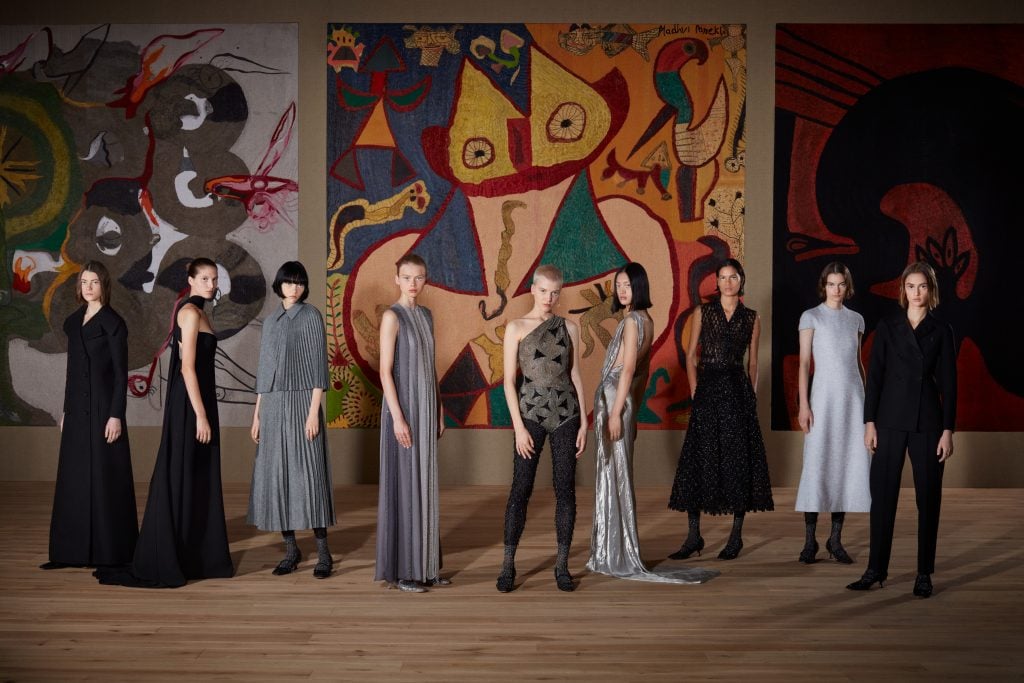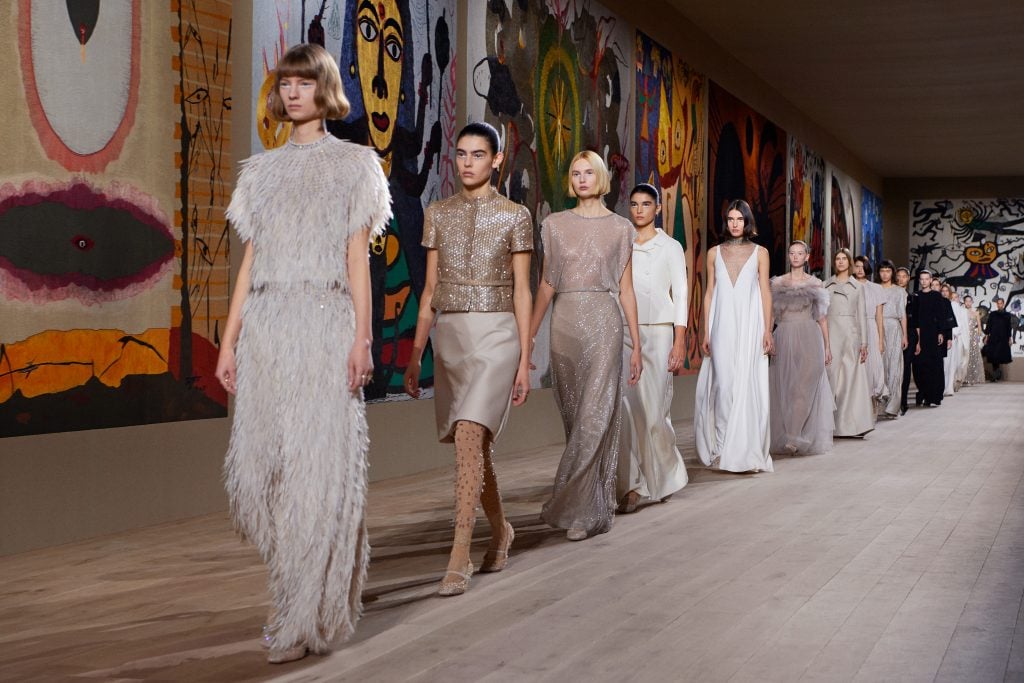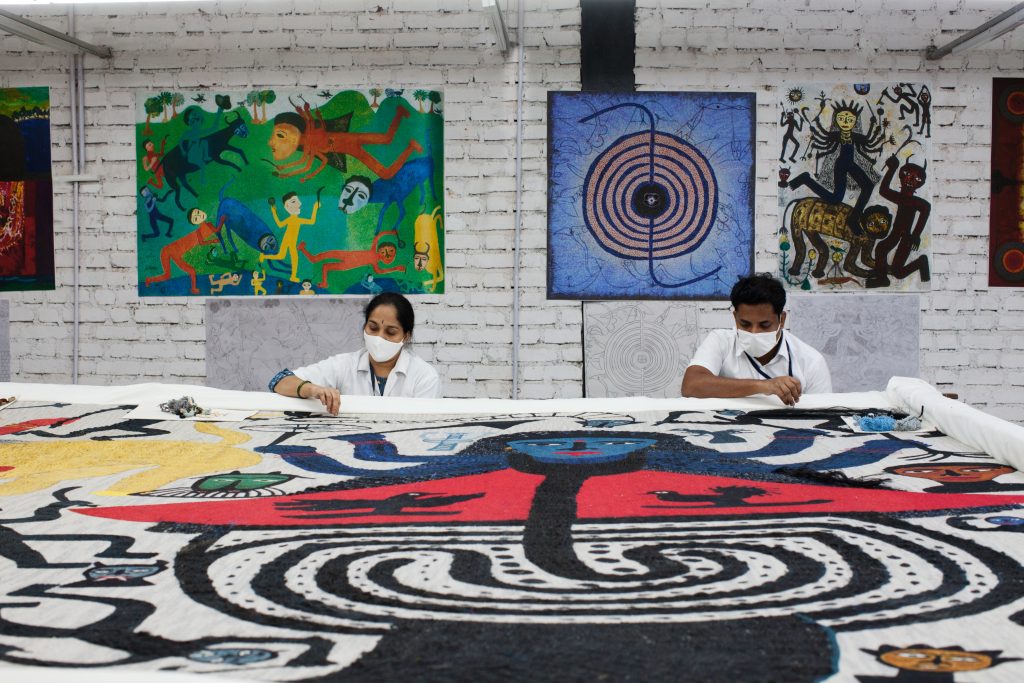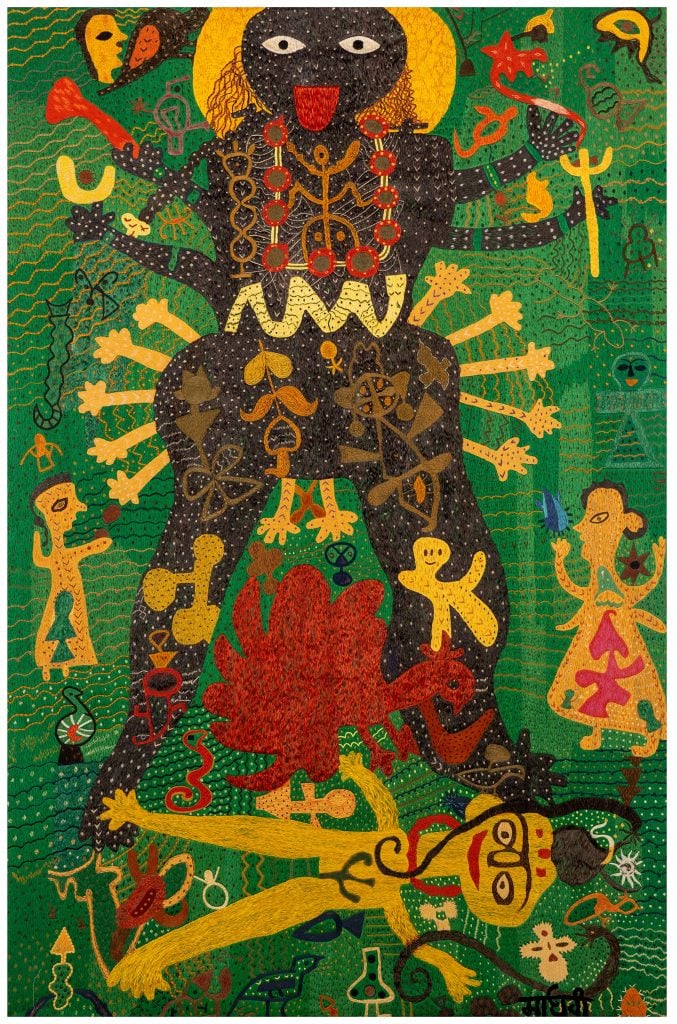Style
Dior Spotlights Indian Artists Madhvi and Manu Parekh During Its Runway Show at the Musée Rodin in Paris
For the spring-summer 2022 haute couture presentation, Maria Grazia Chiuri commissioned a textile backdrop featuring the artists’ works.

For the spring-summer 2022 haute couture presentation, Maria Grazia Chiuri commissioned a textile backdrop featuring the artists’ works.

Christine Ajudua

With her spring-summer 2022 haute couture collection for Dior, creative director Maria Grazia Chiuri is paying homage to the art of hand craftsmanship—at the French fashion house and far beyond.
Embroidery has been elevated from a decorative detail to a “three-dimensional conceptual act,” as the brand said in a statement, giving everything from silver lamé jacquard dresses to draped leotards and tights an avant-garde architecture by way of embellishment.
It has also informed the large-scale, handcrafted textile panels that framed the collection’s presentation this week inside Paris’s Musée Rodin, where they will remain on display through Sunday (January 30), featuring works by renowned Indian artists Madhvi and Manu Parekh.

The presentation took place at Paris’s Musée Rodin, with its textile wall panels featuring a retrospective of works by Indian artists Madhvi and Manu Parekh. Courtesy of Dior.
Known for weaving India’s cultural traditions into their practices—Madhvi looks to Indian mythology and folk art forms like rangoli, while Manu’s abstract paintings explore elements of spirituality—the New Delhi–based couple has collaborated with Dior via Chanakya. The Mumbai atelier partners with luxury fashion houses to showcase the heritage of hand embroidery in India and internationally; it also has a non-profit School of Craft to foster artisanship among underserved women, helping ensure that ancient techniques live on.
Amidst a broader trend of designers connecting with artisans beyond the West, “Maria Grazia has always been a true champion for craft excellence, fostering and preserving indigenous master techniques from around the world,” said Karishma Swali, creative director of Chanakya and co-founder of its school, in a statement from the atelier.
“We talk a lot about the incredible ateliers we have here in the Avenue Montaigne,” Chiuri told the Guardian. “But Indian artisans make embroidery with just the same knowledge and expertise and depth of tradition as embroidery in France and Italy. This excellence is not just ours.”

Chanakya artisans turned paintings by the Parekhs into hand-embroidered tapestries for Dior. ©Prarthna Singh.
For Dior’s runway backdrop, 320 of Chanakya’s master artisans turned a selection of the Parekhs’ artworks into textiles over the course of three months, embroidering 3,600 square feet of organic canvas entirely by hand. Using both traditional Indian and couture techniques, they also contributed intricate beadwork to the collection, whose muted tones contrasted the colorful scenography—a quasi-retrospective of the Parekhs’ art, spanning decades.
“I began collecting works by the Parekhs personally many years ago and found an incredible synergy between modernism and traditional Indian motifs, with a deep reverence for exceptional craftsmanship,” Swali said. “The challenge of interpreting their work was thrilling, and we went about the fabrication allowing the vivid lines and forms of the artists to lead the way.”

Madhvi Parekh and Karishma Swali for Chanakya, World of Kali, 2021-22. Courtesy of Chanakya.
While recreating Madhvi’s World of Kali, with its embodiment of Shakti, Chanakya’s artisans used raw linework in repetition to add dimension to the divine feminine energy. And for Manu’s “Chant” series, they used couching techniques alongside traditional Indian fine-needle zardozi stitches, producing an atmospheric sfumato effect.
Their collaboration aimed “to overcome the division between art and craft, invoking a shared language between the two,” said Swali. “The collective vision was to create an immersive experience that celebrates the culture of craftsmanship and the interconnection between us all.”